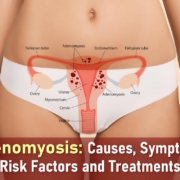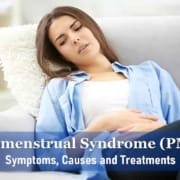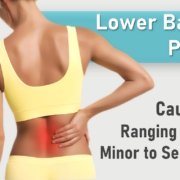Lower Right Abdominal Pain: Causes, and When to See a Doctor
Pain in the lower right abdomen can be caused by a variety of conditions, ranging from minor digestive issues to serious medical emergencies. It is essential to understand the possible causes, associated symptoms, and when to seek medical attention.
The abdomen is the area between the chest and pelvis and contains several vital organs, including the intestines, liver, kidneys, and reproductive organs. The lower right abdomen specifically houses a portion of the large intestine (colon), the appendix, and in women, the right ovary and fallopian tube. Pain in this area may originate from any of these structures or be referred from other parts of the body.
Lower right abdominal pain, also known as right lower quadrant (RLQ) pain, is discomfort or aching that occurs below the belly button on the right side of the body. The severity and nature of the pain can vary, some cases present as mild cramping, while others involve sharp, stabbing pain requiring immediate medical care.
Where Is the Lower Right Abdomen Located?
To locate the lower right abdomen, imagine dividing your abdomen into four sections. The section on your right side, below your belly button, is the right lower quadrant (RLQ). This area houses several important organs and structures, including:
- The small intestine (ileum).
- The connection between the small and large intestines (cecum).
- The appendix.
- The first part of the large intestine (colon).
- The right ureter (located behind other organs).
- The right ovary and Fallopian tube (in women).
Additionally, the skin, muscles, and nerves in this area can also contribute to pain in the lower right abdomen.

Common Causes of Lower Right Abdominal Pain
Several medical conditions can contribute to pain in the lower right abdomen. Below are some of the most common causes, along with their associated symptoms and explanations.
Gastroenteritis and Food Poisoning
- Viral or bacterial infections can cause inflammation of the stomach and intestines, leading to nausea, vomiting, diarrhea, and abdominal cramps.
- Lower right abdominal pain may occur due to irritation in the intestines.
- Food poisoning often occurs after consuming contaminated food or water and can lead to sudden onset symptoms.
- Dehydration is a potential risk if vomiting and diarrhea persist for an extended period.
Constipation
- Constipation occurs when stool moves too slowly through the intestines, leading to hard, dry stools that are difficult to pass.
- It can cause bloating, discomfort, and cramping, sometimes affecting the lower right abdomen.
- Other symptoms include straining during bowel movements, infrequent stools, and a feeling of incomplete evacuation.
- Dehydration, a low-fiber diet, and lack of physical activity can contribute to constipation.
Irritable Bowel Syndrome (IBS)
- IBS is a functional gastrointestinal disorder that affects the way the intestines contract and process food.
- Symptoms include cramping, bloating, gas, and changes in bowel habits (diarrhea, constipation, or both).
- Pain can occur anywhere in the abdomen, including the lower right side.
- Triggers include stress, certain foods, and hormonal changes.
Appendicitis (Medical Emergency)
- Appendicitis is the inflammation of the appendix, a small tube-like organ attached to the large intestine.
- The pain often begins near the belly button and then moves to the lower right abdomen.
- The pain intensifies over time and may worsen with movement, coughing, or pressing on the area.
- Additional symptoms include fever, nausea, vomiting, loss of appetite, and swelling of the abdomen.
- If left untreated, the appendix can burst, leading to a life-threatening condition called peritonitis.
- Immediate medical attention is required for suspected appendicitis.
Diverticulitis
- Diverticulitis occurs when small pouches (diverticula) in the digestive tract become inflamed or infected.
- Although it most commonly affects the left side of the abdomen, pain can sometimes be felt on the right.
- Symptoms include abdominal pain, fever, nausea, and changes in bowel movements (diarrhea or constipation).
- Diverticulitis may require antibiotics, dietary changes, or in severe cases, surgery.
Trapped Inguinal or Femoral Hernia
- A hernia occurs when tissue or a portion of the intestine pushes through a weak spot in the abdominal wall.
- If a hernia becomes trapped (incarcerated), it can cause pain, nausea, and vomiting.
- Common symptoms include a visible bulge in the lower abdomen or groin area.
- Strangulated hernias, where the blood supply to the trapped tissue is cut off, require emergency surgery.
Kidney Infections
Kidney infection can also cause pain that radiates from the back (loin) around to the lower right abdomen. Symptoms include:
- Pain during urination.
- Frequent urge to urinate.
- Fever and chills.
Causes of Lower Right Abdominal Pain in Women
Women may experience pain in the lower right abdomen due to conditions specific to the reproductive system. Some common causes include:
Pelvic Inflammatory Disease (PID)
PID is an infection of the reproductive organs that can cause:
- Pain in the lower right abdomen or both sides.
- Pain during intercourse.
- Abnormal vaginal bleeding or discharge.
- Fever and general discomfort.
Mittelschmerz (Ovulation Pain)
Mittelschmerz refers to pain during ovulation, which typically occurs midway through the menstrual cycle. Symptoms include:
- Sudden, sharp pain on one side of the lower abdomen.
- Pain that resolves within minutes to hours.
Ovarian Torsion
Ovarian torsion occurs when an ovary twists around its supporting tissues, often due to a cyst. Symptoms include:
- Severe, intermittent pain in the lower right abdomen.
- Nausea and vomiting.
If you experience persistent or severe lower right abdominal pain, it’s important to seek medical attention to determine the underlying cause and receive appropriate treatment.
Additional Causes of Lower Right Abdominal Pain
While many causes of lower right abdominal pain are common, some conditions are specific to certain groups or require special attention. Below are additional causes to consider:
Endometriosis
Endometriosis is a condition where tissue similar to the lining of the uterus grows outside the uterus. It can cause:
- Chronic pain in the lower right abdomen, often worsening before or during menstruation.
- Pain that may be localized to one side or spread across the lower abdomen.
Ectopic Pregnancy
An ectopic pregnancy occurs when a fertilized egg implants outside the uterus, often in a fallopian tube. This is a medical emergency and requires immediate attention. Symptoms include:
- Severe pain in the lower right abdomen or pelvis.
- Vaginal bleeding.
- Dizziness or fainting.
Causes of Lower Right Abdominal Pain in Men
Men may experience pain in the lower right abdomen due to conditions affecting the reproductive organs. Some common causes include:
Testicular Torsion
Testicular torsion occurs when the testicle twists, cutting off its blood supply. Symptoms include:
- Sudden, severe pain in the scrotum and lower right abdomen.
- Swelling and tenderness in the affected testicle.
- Nausea and vomiting.
This condition requires urgent medical attention.
Epididymo-Orchitis
Epididymo-orchitis is an inflammation of the testicle or the tubes surrounding it, often caused by an infection. Symptoms include:
- Pain and swelling in the scrotum, which may radiate to the lower right abdomen.
- Redness and tenderness in the affected area.
- Fever and general discomfort.
Other Possible Causes of Lower Right Abdominal Pain
Inflammatory Bowel Disease (IBD)
IBD, including Crohn’s disease and ulcerative colitis, causes inflammation of the digestive tract. Symptoms include:
- Chronic diarrhea, sometimes with blood or mucus.
- Crampy pain in the lower right abdomen (common in Crohn’s disease).
- Weight loss and fatigue.
Colon Cancer
Colon cancer can cause pain in the lower abdomen, though it more commonly affects the left side. Symptoms include:
- Changes in bowel habits, such as diarrhea or constipation.
- Blood in the stool.
- Unexplained weight loss.
Kidney Stones
Kidney stones can cause severe pain as they pass through the urinary tract. Symptoms include:
- Sharp, radiating pain from the back to the lower right abdomen or groin.
- Blood in the urine.
- Nausea and vomiting.
Shingles
Shingles, caused by the reactivation of the chickenpox virus, can cause pain before a rash appears. Symptoms include:
- Burning or sharp pain in the lower right abdomen or other areas.
- A blistery rash that develops later.
- General malaise.
Abdominal Aortic Aneurysm
An abdominal aortic aneurysm is a swelling of the aorta, the largest blood vessel in the body. Symptoms include:
- Pain in the back, side, or lower right abdomen.
- A pulsating sensation in the abdomen.
This condition can be life-threatening if the aneurysm ruptures.
What Else Could It Be?
There are many other potential causes of lower right abdominal pain, including:
- Referred pain: Pain originating from the spine or back but felt in the abdomen.
- Muscle strains: Pain that worsens with movement and improves with rest.
When to See a Doctor
If you experience persistent or severe lower right abdominal pain, it’s important to seek medical attention. Consult a doctor immediately if you have:
- Very severe or excruciating pain.
- Persistent vomiting or diarrhea.
- Unexplained weight loss.
- Blood in your stool or vomit.
- Dizziness, lightheadedness, or fainting.
- A change in bowel habits that lasts more than a few days.
- Suspicion of pregnancy or other reproductive concerns.
Early diagnosis and treatment are crucial for managing the underlying cause of lower right abdominal pain and preventing complications.
Diagnosing Lower Right Abdominal Pain
When you visit a doctor for lower right abdominal pain, they will begin by asking about your symptoms and medical history. A physical examination is often the first step in narrowing down the cause of your pain. For example, if a rash associated with shingles is present, further testing may not be necessary.
What to Expect During the Examination
- The doctor will gently press on your abdomen, particularly the lower right quadrant, to check for tenderness, swelling, or other abnormalities.
- They may also examine other areas, such as the groin or back, to rule out referred pain.
- A urine sample is often required to check for kidney or urinary tract issues.
Common Diagnostic Tests
Depending on the findings from the initial examination, your doctor may recommend additional tests, such as:
- Blood tests: These can check for infections, inflammation, anemia, or issues with liver and kidney function.
- Imaging tests:
- An ultrasound or CT scan may be used to examine the appendix, ovaries, kidneys, or other organs in the lower right abdomen.
- An X-ray may be helpful in certain cases.
- Colonoscopy or sigmoidoscopy: These procedures use a camera to examine the large intestine for issues like diverticulitis or inflammatory bowel disease (IBD).
- MRI scan: This may be used for a more detailed view of soft tissues and organs.
In emergencies, such as suspected appendicitis, ectopic pregnancy, or testicular torsion, immediate surgery may be required with minimal testing.
Treatment Options for Lower Right Abdominal Pain
The appropriate treatment for lower right abdominal pain depends on its underlying cause. Some conditions may resolve with simple lifestyle adjustments, while others require medical intervention. Below are common treatment approaches for specific conditions:
- Constipation: Increasing fiber and water intake can help prevent and relieve constipation. Over-the-counter laxatives or stool softeners may provide short-term relief if dietary changes are not sufficient.
- Gastroenteritis: Most cases improve with rest, hydration, and a bland diet. If a bacterial infection is suspected, a doctor may prescribe antibiotics.
- Appendicitis: The standard treatment is surgical removal of the appendix (appendectomy). Prompt surgery is crucial to prevent complications like rupture and infection.
- Ectopic Pregnancy: This is a medical emergency that often requires surgery to remove the affected fallopian tube. In some cases, medication may be used to dissolve the pregnancy while preserving reproductive health.
- Shingles: Antiviral medications can help reduce symptom severity and shorten the duration of the illness. Pain relievers and soothing lotions may be recommended to manage discomfort.
- Kidney Infections: Mild infections can often be treated at home with oral antibiotics and plenty of fluids. Severe cases may require hospitalization for intravenous antibiotics and close monitoring.
- Kidney Stones: Small stones typically pass on their own with increased fluid intake and pain management. Larger stones may require medical intervention, such as lithotripsy (shock wave therapy) or surgical removal.
In all cases, seeking medical advice is essential for proper diagnosis and treatment. If symptoms worsen or persist, consult a healthcare provider promptly.
What Is the Outlook for Lower Right Abdominal Pain?
The prognosis for lower right abdominal pain varies widely depending on the cause:
- Acute conditions: Issues like gastroenteritis or mild kidney infections often resolve quickly with treatment.
- Surgical conditions: Appendicitis or testicular torsion can be cured with timely surgery.
- Chronic conditions: Conditions like Crohn’s disease or endometriosis may require long-term management to control symptoms.
Your doctor will provide a clearer outlook once a diagnosis is confirmed. Early intervention is key to preventing complications and ensuring the best possible outcome.
Conclusion
Lower right abdominal pain can have many causes, ranging from minor digestive issues to life-threatening emergencies like appendicitis. Identifying the source of discomfort and recognizing warning signs can help determine whether home care, medical evaluation, or urgent treatment is necessary. If in doubt, always seek professional medical advice to ensure your health and well-being.










